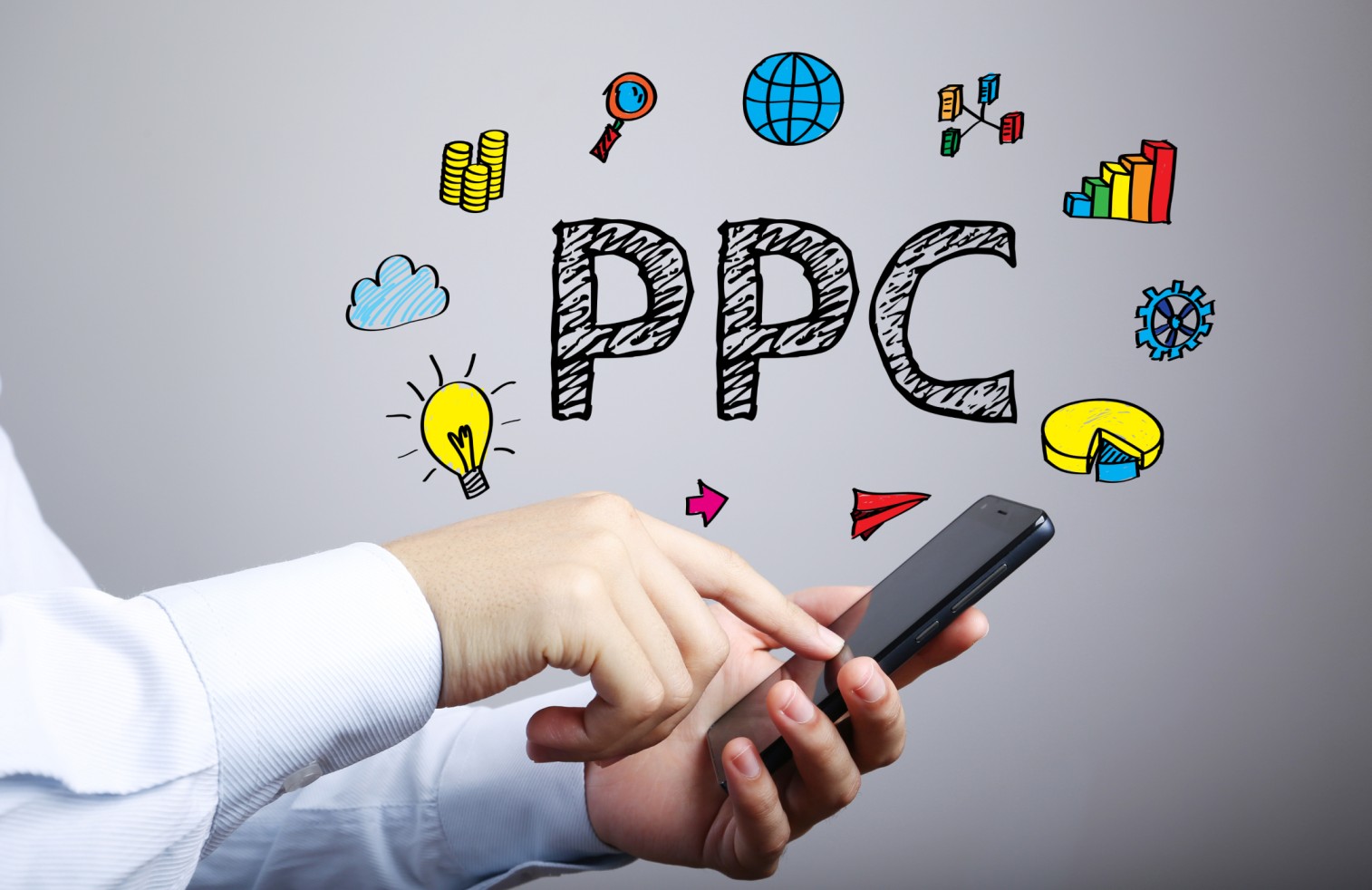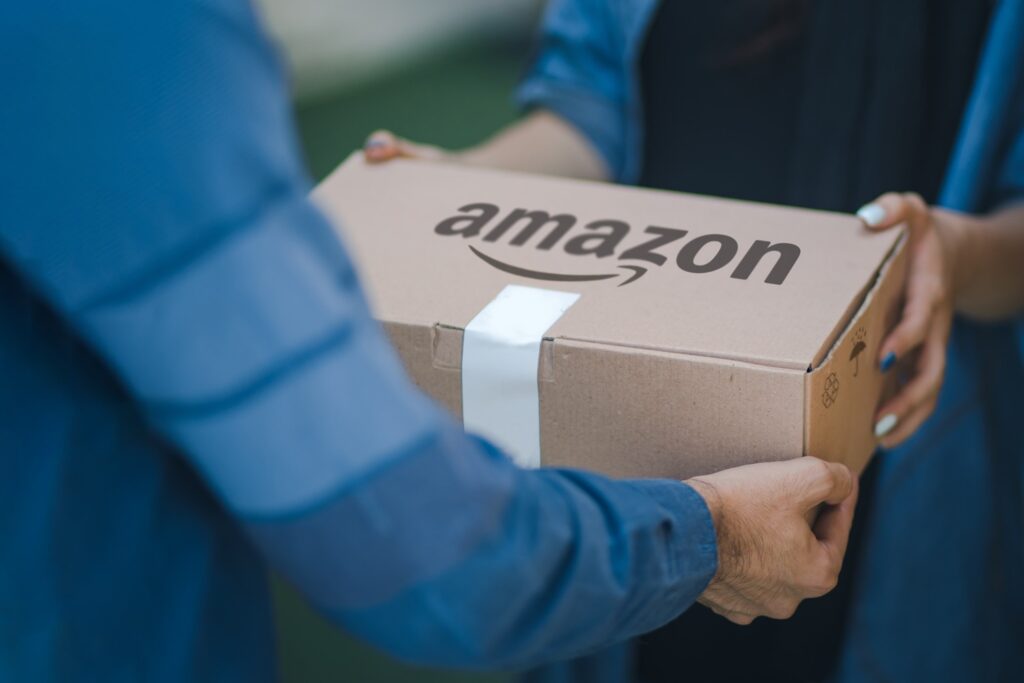Is Amazon PPC Advertising Worth It? Evaluating the ROI and Benefits

Amazon is one of the top online marketplaces in the world, and you can pretty much purchase anything you need and get it shipped out to you as quickly as possible.
However, how do you know which item is the best option? That’s where PPC advertising comes into place. Sellers use these types of sponsored ads to drive more traffic to their listings and own e-commerce platforms, ensuring that you purchase the headphones from them and not from one of their competitors.
But how do these Amazon PPC ads actually work? And are Amazon sponsored ads worth it? We have all the answers for you below.
What are Amazon sponsored ads?
If you’ve ever tried to advertise on Google, you’ve probably seen PPC ads before. They appear on the top of Google searches saying ‘Sponsored’, attracting people to your website. This works the same way for Amazon sponsored product ads; only it’s on the Amazon platform instead.
Amazon sponsored products are pay-per-click (PPC) ads that will appear throughout the Amazon marketplace for potential buyers to click on. It gives a seller’s platform and products more visibility and increases the likelihood of making a sale. You have to pay a fee for every click the advertisement gets, but you can set a budget to ensure you don’t spend beyond your means.
Do Amazon ads work?
So, do Amazon ads work, and should you use them for your own marketplace on the platform? Here are some of the most important pieces of information you need to know about Amazon PPC campaigns before you make your decision.
Benefits of Amazon sponsored ads
Increased visibility and exposure
If you have a product on the Amazon marketplace, but you’re not getting the number of sales you would like after it’s been on there for a while, then these Amazon sponsored product ads are the way to go. They help your product appear right next to the searched products of your competitors. For example, if you search ‘wireless headphones’, then not only will the top sellers appear on the first page, but so will yours when you’re paying for PPC.
It gives you a lot more visibility and exposure, and after some time, when you’ve received more sales and reviews on your product, you might be able to appear on the first search page without needing to pay for the sponsored ads anymore.
Enhanced product discoverability
Not only is an Amazon PPC strategy useful for those products that have been sitting there for a while with zero interest, but they are also great for getting new products discovered. If you’re new to selling on Amazon and you don’t know how to get the first reviews on your account and make a few official sales, then you might feel a little lost. Sponsored product ads are a great way to kickstart your Amazon sales career.
While it might not guarantee sales, it definitely increases the likelihood of your product being discovered. If you are getting many clicks and not many sales, you might need to rethink your strategy in other ways, such as rewriting the description or updating the images.
Targeted advertising to relevant audiences
The last thing you want is to have to pay for ads that are being shown to people who have no interest in seeing your products. This would just be a waste of money because the chances of them purchasing past a click would be unlikely. The great thing about Amazon advertising is that this won’t happen. Your PPC ads will turn up on the search page of other relevant products, helping you stand out from the competition.
If someone wants a new pair of headphones, and that’s what you’re selling in your Amazon PPC ad, then your headphones will turn up as sponsored next to the rest of the search results. Therefore, you’re targeting an audience who actually wants to buy what you’re selling, and you increase the chance of a successful purchase.

Cost and budget considerations
Unfortunately, Amazon product display ads aren’t free, but they do work out to be fairly cost-effective if you use them correctly. Here are some considerations you should go through regarding budget and spending before getting started:
CPC (Cost Per Click) and bidding strategies
How spending on Amazon sponsored ads works is that they charge you per click. How much you spend on each click will vary per ad, as it is all down to the amount of competition and keyword relevance you’re using. On average, most sellers spend just under a dollar for each ad, but this can be more or less depending on your strategy.
Putting together the cost per click for your advertisement needs to be strategic, so you need to use various bidding strategies that work in your favour. For example, you might want to use automatic bidding for a simpler management method, or you can set your own manual bid to have a higher level of control over what you spend. It is always a good idea to test different strategies to see what works for you best.
Budget allocation and optimisation
Your budget is important when it comes to putting together an Amazon PPC campaign. That’s because you want to spend within your means and also spend an amount that doesn’t leave you at a loss at the end. The whole point of spending is actually to increase your sales and revenue. Therefore, you need to consider both your short-term and long-term goals when allocating a budget.
It’s best to put together both a daily and monthly budget that you want to meet and allow for some leeway if any issues arise. Depending on how many campaigns you have, you want to allocate your funds based on how each one performs while also including high-performing keywords that will increase your visibility.
Ensure you regularly monitor and analyse each of your PPC ads to see which ones are doing well, which ones aren’t, and areas for improvement. Adjust your budget depending on the data you receive and continuously refine your strategies for the best results.
Measuring ROI
As we have mentioned, you don’t want to come out at a loss with your Amazon sponsored ads. Therefore, you need to measure your return on investment (ROI) to see if you’re getting back more than you’re putting in.
Key performance indicators (KPIs) to track
Tracking various KPIs can help you assess the effectiveness of your campaigns. Here are some of the most important ones to figure out each month:
- Sales revenue (the total revenue generated from your PPC ad)
- ACoS (Advertising Cost of Sales) (This is a ratio that compares how much you’ve spent on your ad to your sales revenue)
- CTR (Click-Through Rate) (Percentage of users who click on your ad after seeing it)
- Conversion rate (Percentage of ad clicks that have resulted in a purchase)
Analysing sales data and campaign performance metrics
So, KPIs are important, but how do you actually look at the data from them and determine whether they are positive outcomes or not? It is pretty simple actually. You need to ensure that the ACoS ratio is higher on the sales revenue side than the cost of spending. If it isn’t, then you need to look at other KPIs and figure out where it’s going wrong.
For example, if the CTR is low, then it might be that the initial PPC ad isn’t very attractive. If people are clicking on your ad but not converting to a sale, then the issue is that your whole listing might not be selling your product. You need to use this data to see which part of the sales journey is working and make adaptations to try to improve your performance metrics for the next month.

Challenges and risks
As with most things in life, especially when it comes to marketing, there are potential challenges and risks you might face. Here are some of the main ones:
Competition and ad saturation
Two of the main challenges that are associated with Amazon PPC advertisements are competition and ad saturation. While Amazon is one of the world’s largest online marketplaces, this means there is a lot of competition to sift through. Unless you have a state-of-the-art, 100% unique product, you’re going to have other sellers selling the same, or at least a very similar, product to you. They might be using PPC ads too, so it can then become harder to stand out from the crowd.
Ad saturation is another challenge. This is when the same audience is repeatedly shown your ad. This makes it less likely to receive more sales as it’s unlikely that the same audience is going to continue clicking on your ads and buying the same product again. The best way to overcome this challenge is to manage the ad frequency and target more specific audiences.
Ad performance fluctuations
A risk that you might face when putting out an Amazon PPC campaign is that there are fluctuations in performance. No matter how hard you try to optimise your listing, you might notice that some months are better than others. Unfortunately, this is the case for everyone, so you shouldn’t rely on simply putting out a sponsored product ad as your only form of marketing.
For optimal performance when selling products on Amazon, you need to use a combination of different marketing strategies. When these work together, you will receive more engagement and therefore, there is less chance of experiencing large fluctuations when you receive much less revenue in one month than another.
Best practices and tips
If you think starting an Amazon PPC ad campaign is the way to go for your products, you want to ensure you’re getting the most out of it. Here are some of the best practices and tips you can follow:
- Conduct thorough keyword research to pinpoint relevant terms.
- Utilise Amazon’s targeting options (automatic or manual) for precision.
- Ensure product listings are optimised with high-quality visuals and persuasive content.
- Adjust bids to balance cost and performance, focusing on top-performing keywords.
- Craft compelling ad copy that highlights unique selling points.
- Experiment with various ad placements to maximise visibility.
- Employ negative keywords to enhance relevance.
- Regularly monitor key metrics like ACoS for insights.
- Optimise product images for increased click-through rates.
- Stay updated on platform changes and industry trends to remain competitive.

The differences between Google and Amazon ads
We mentioned Google ads previously in this guide, and that’s because many sellers seem to think that Google and Amazon ads are the same. While there are many similarities, and they both use the same idea, there are also some big differences that set them apart.
When a shopper is using Google and comes across a PPC ad, it is more targeted to those earlier in their shopping journey and trying to find a product. With Amazon, the shopper has a much better idea of the specific product they want and has probably searched for it. They’re also ready to make a purchase and are at the end of their shopping journey. Therefore, the purpose is different.
Similarly, the performance metrics of the two ads are different as well. Google PPC ads highly metrics such as CTR, keyword relevance, ad copy relevance, landing page relevance, and historical performance. Amazon PPC ads highlight more granular details in the metrics like CTR, conversion rates, and overall unit sales.
How Mercatus can help
Amazon PPC ads come with many benefits, and while there may be a couple of challenges to overcome, they can end up really helping your product listings on the marketplace. For some additional help in becoming one of the top sellers on Amazon, Mercatus can help. We are an Amazon ads verified partner and can provide assistance in optimising your sponsored ad so you get the most out of it. Just get in touch with one of our experts today to get started.


